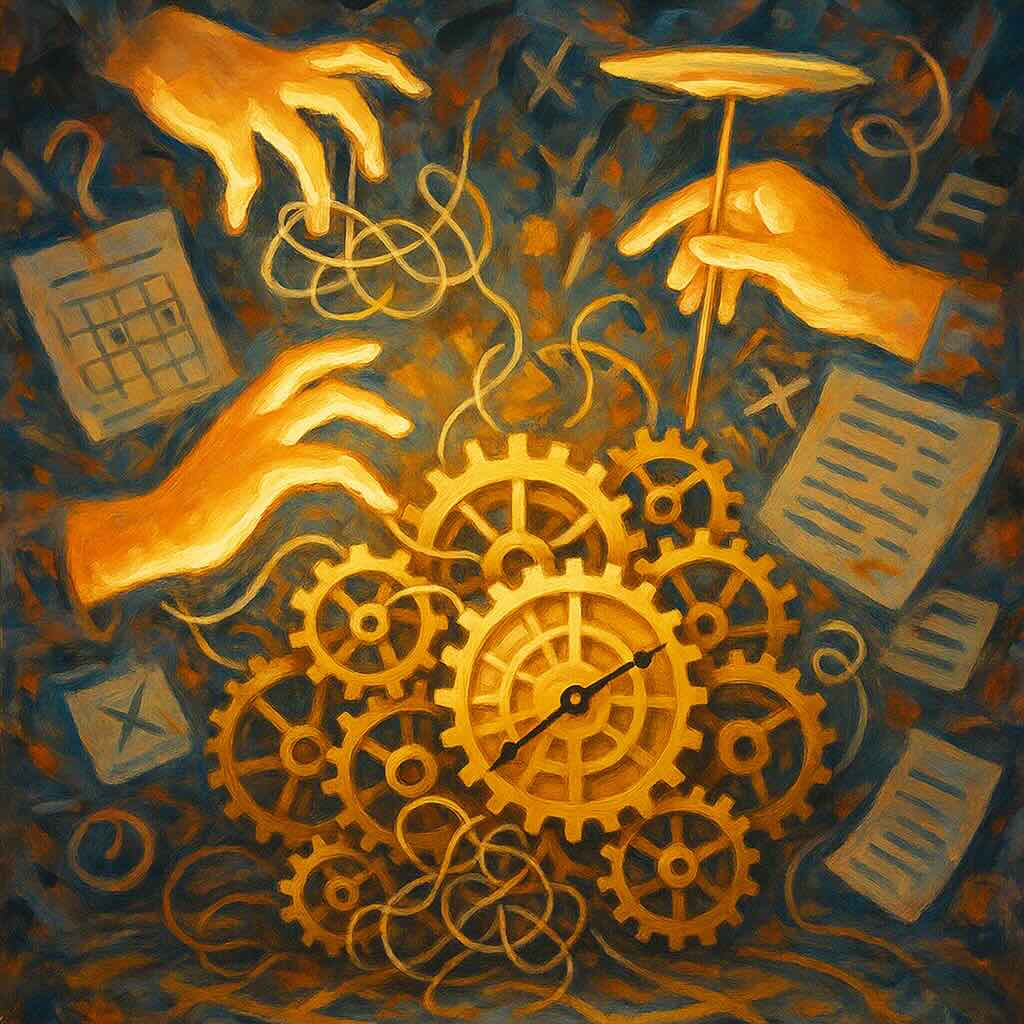For anyone working within the four walls of a GP practice, the sight of the Practice Manager (PM) is a familiar one: a blur of motion, powered by caffeine, clutching a phone that never stops ringing and a to-do list that defies the laws of physics.
To an aspiring admin team member, they might look like a superhero. To a Partner, they are the linchpin holding the entire business together. But what does the person in the hot seat actually do all day? And more importantly, how do they do it without spontaneously combusting?
The Ringmaster of the (Medical) Circus
Let's get the official job description out of the way. The PM is the business and operations manager. Their core responsibility is ensuring the practice doesn't fall foul of the ever-growing mountain of compliance regulations. We’re talking about the 11 domains of GP practice compliance – a list so comprehensive it could be its own epic novel:
Access and Inclusion: Ensuring the front door is open to everyone.
Clinical Governance: The framework that keeps our patient care safe and top-notch.
Health and Safety: Preventing that box of A4 paper from becoming a lethal weapon.
HR and Workforce: The hiring, firing, and everything-in-betweening.
Infection Control: Because nobody wants a pet Verruca.
Information Governance: Guarding patient data like it’s the Crown Jewels.
Medicines Management: Making sure the right pills get to the right people.
Organisational Resilience: The "What do we do if the power goes out mid-flu clinic?" plan.
Patient Experience: Turning frowns upside down (or at least managing expectations).
Premises and Equipment: Keeping the lights on and the ECG machine from going kaput.
Safeguarding: Protecting our most vulnerable patients.
Looking at that list, it’s clear why the PM’s coffee is rarely hot. But as everyone in the building knows, that’s not the half of it.
GP Compliance Library
If you like this article you'll love our more detailed GP Compliance Library. For the first time, GP practices can get a clear, step-by-step answer to the question: “Exactly what do I need to be compliant?”
Covers 11 compliance domains – from Access & Inclusion to Safeguarding Over 400 documents and guides with model policies & practical checklists Designed to support new and experienced PMs alike
💡 Free until September 2025: All learning guides are available with a free account. (Paid plans unlock the compliance documents themselves and AI tools.)
This is the first complete, practical guide to GP practice compliance - built to make compliance clear, manageable, and stress-free.
The Unofficial (But Very Real) Job Description
Beyond the policies and procedures lies the reality of the role. The PM is the practice's designated fixer, diplomat, and part-time counsellor. They are the person who gets the call when the panic alarm is triggered by a rogue moth, the heating decides to pack up in December, or two colleagues have a "disagreement" over who used the last of the milk. They are the human shield for frustrated patients and the steadying hand for overwhelmed staff.
It’s a role that requires the strategic mind of a chess grandmaster, the patience of a saint, and the unflappable demeanour of a bomb disposal expert.
The Secret Weapon: How to Do the Impossible
So, for any aspiring PMs wondering if they need to clone themselves, or for Partners wondering how their PM is still standing, here is the secret. The job, as described, is too much for one person. It’s impossible.
Attempting to do it all alone is a one-way ticket to burnout.
The real skill of a great Practice Manager isn't just juggling tasks; it's creating a machine that can run itself. This is where robust governance and solid processes come in. This isn't about creating more paperwork for the sake of it; it's about building a framework for control, oversight, and sanity.
As an absolute minimum, a dedicated monthly governance meeting should be sacred. This isn't just another meeting for the diary. It’s the PM’s command centre. It’s where you and the key stakeholders step back from the daily firefighting and look at the whole battlefield.
In this meeting, you systematically review the running of the practice against those key compliance domains. You identify the gaps. And here’s the crucial part: you won't be able to fill them all. Nobody has a magic wand or an infinite budget. But what you can do is document everything. You create a written record of the risks you've identified and, most importantly, the conscious decisions you've made about where to focus your limited time and resources.
This documented process is your shield. It proves you have a systematic approach to quality and safety. It allows the PM to demonstrate to the Partners exactly what the practice needs to do well, and what resources are required to get there. It transforms the role from a chaotic "general dogsbody" into a strategic Business Manager.
So, while the day-to-day might still involve plunging the occasional toilet, the foundation of the job is—or should be—one of structure, strategy, and control. It’s this hidden framework that allows the practice to not just survive, but thrive. And for the Practice Manager, it’s the only way to keep all those plates spinning without losing your own.
